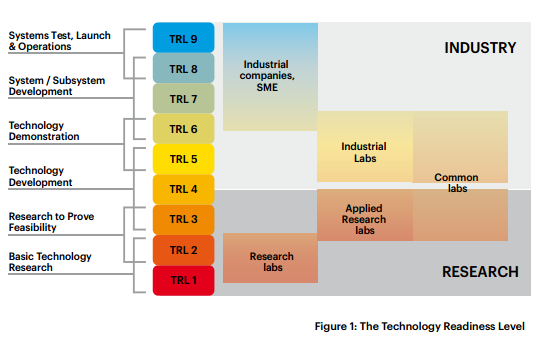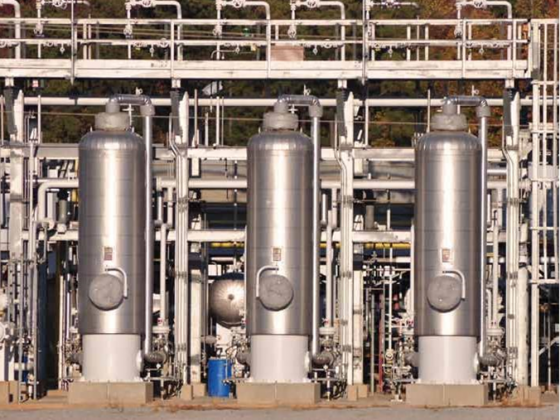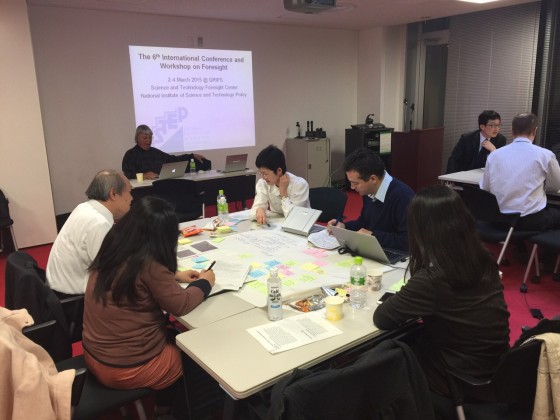by | Shamsul Kamar Abu Samah CEO of Aerospace Malaysia Innovation Centre (AMIC)
Malaysian aerospace industry has evolved since the launching of the National Aerospace Blueprint in 1997. In 2001 the Malaysian Aerospace Council (MAC), chaired by the Prime Minister, decided that the Malaysian aerospace industry would focus on four areas:
- aerospace manufacturing;
- maintenance, repair and overhaul (MRO);
- avionics and system integration; and
- aerospace training and education.
To date, Malaysian companies are internationally recognized and play major roles in the global supply chain as the supplier of aircraft parts and components to leading aircraft manufacturer – Airbus and Boeing. They are also the regional MRO service providers to global fleets.
The evolution of aerospace technology has been tremendous and the aerospace industry is now speaking a brand new language of business. It is the language of future generations of aerospace professionals. The potential for future growth is enormous and the advancements have taken the industry to many new levels of opportunities.
Surviving and sustaining the industry
I believe, to move on, we have to enrich the industry through adoption of advanced technologies. We have to accelerate local research and technology (R&T) activities by modernizing our technology and processes; especially in aerospace manufacturing and MRO. Everyone has a role to further drive this industry forward; be it the researchers and scientists who run the research activities, universities that provide research facilities, engineers to advice on the industry’s requirement and on-site application, and also businessmen and executives to move the market.
Let us take A320, one of the most popular single aisle aircraft as an example. Here is the scenario: Malaysia is the single-source components supplier for the aircraft spoiler whilst AirAsia Group is the largest customer for the A320 Family. For every sale for A320, Malaysia gets the job to produce the spoiler before it is shipped to United Kingdom to be assembled with the complete wings. In addition, we will also supply the spare parts to the operators or MRO organization to support the operation of the said aircraft type.
Thus, in order to ensure that we retain this ‘exclusive business’, we need to be innovative in enhancing our manufacturing processes. At the same time, we should not limit our capability by producing the same type of products. We have made progress. We undertake work packages for more complex part, namely the fan cowl that requires additional competencies to be developed within our industry, and the composite fixed leading-edge wing component – the largest part assemble locally by Spirit AeroSystems Malaysia.
The next target is to participate in the Next Generation Single Aircraft Program for all products that we currently produce. Therefore, we need to expand our technical competencies and capabilities as we anticipated the design of the new advanced generation aircraft will definitely utilizes advanced technology and new materials. In addition, we also need to strengthen our local supply chain to support this initiative. The establishment of Aerospace Malaysia Innovation Centre (AMIC) in 2011 is to ensure that Malaysia will sustain its aerospace business in a long run through R&T.
The aircraft of tomorrow
Future aircraft will utilize more advanced material and technologies and this is a clear hint of change in the future MRO activities. Therefore, we need to look into new technology related to composite repair, analysis, redesign and so on. More composite materials are likely to be used in the new aircraft. Even today, more than 50% of A350, 30% in A400M and 25% of A380 are composite parts. Utilization of composite materials is among the potential areas being explored by the OEMs to reduce the weight of the aircraft and to increase efficiency that would lead to minimal fuel consumption to address the environment concern.
In order to support the global OEM’s vision, our supply chain should have a stronger growth structure. The first aerospace blueprint, introduced in 1997, has mapped the local industry development through various initiatives up to 2015. But, what will happen beyond 2015? Currently, there are a number of initiatives such as the strategy to prepare Malaysia to participate in the Next Generation Aircraft Program, industry-led R&T through public-private partnership that is implemented by AMIC, and developing future design engineers through LEADER Aerospace program to cater for the future of Malayia’s aerospace manufacturing’s need. However, more activities need to be developed in the MRO in relation to engine maintenance and modification, composite repair and remanufacturing activities. It is also important to encourage more manufacturing companies to participate in the industry.
MIGHT, together with the relevant stakeholders, is currently formulating a new National Aerospace Blueprint to chart the industry development for the next 15 years. Based on our active involvement throughout the workshops and stakeholders engagement, we at AMIC foresee aerospace R&T will play a major role in ensuring the competitiveness of our aerospace industry at the global level. More quality industry-led research activities on various topics are needed to support the growth of the industry. This will be a great challenge for AMIC and our research partners in delivering innovative technology solutions for the industry.
Challenges ahead
Malaysia is the industry champion for aero-structure manufacturing in the region. However, we are utilizing the same old technology and materials to produce aircraft’s panels although the usage of composite parts and components is being highly recommended and promoted as it reduces weight and increases durability. Therefore, if we want to remain as champion and stay ahead of our competitors, we need to invest on modernizing our processes that may include acquisition of advanced technology.
We are also the regional industry leader for aerospace MRO. To stay ahead of our competitors we have to be abreast with the latest technology. That means composite manufacturing, and composite repair will always be a big challenge as it is far different from conventional metal repair. Therefore, development and adoption of new technology is critical to sustain the business. At the same time, we need to train workers who understand and have the capability to utilize the new technology. Another challenge in composite manufacturing and repair is non-destructive testing (NDT). This test is defined as a process to evaluate the properties of a material, component or system without causing damage. At the moment we have low availability of competent workforce in this area.
Another area that needs our attention is fly-by-wire technology – the electrical, electronics and integrated aircraft system. An example of technology advancement in this area is the display panel in the cockpit which has been replaced by touch screen panel. The problems would be more complicated and the repair needs different approach, knowledge and expertise.
Aerospace business requires low turnaround time. It is of utmost important to ensure task, especially receiving, completing, and returning an assignment, is completed early and within scheduled time. A simple example is the low cost carrier (LCC); the more they fly, the more profit they make therefore, they cannot afford and tolerate any delay at any part of their operation. Customers’ demand in aerospace MRO business is undoubtedly high. Whenever an aircraft is sent to the hangar or workshop for service, repairs are expected to be done immediately. To meet this expectation, skilled workers, technology and relevant test equipment as well as ready supply of spare parts are mandatory. Therefore, to sustain our competitiveness in the industry, training of skilled workforce, development of technology, and availability of equipment and parts should be prioritized.
Development of indigenous aerospace product
As in any other industry, users usually prefer proven high quality products. Therefore, locally produced or indigenous aerospace product must be of equal or higher quality for it to be competitive in the international market. Developing indigenous aerospace products need to take into account various external aspects such as assistance and services of highly competence experts, and long term technical support through upgrading and modification of equipment.
Having locally produced advanced aerospace products is definitely good for our aerospace industry as it would reduce our dependence on supply from other countries and it would make us more competitive in the global market. Aerospace technology is developing and evolving fast. We have to keep pace with the development and evolution in order to retain or competitive edge in the global market. We need to identify what are the areas that we need to improve, evaluating new technologies relevant to our vision and developing plans to elevate our technical workforce to a higher level.
At AMIC, our research themes are innovative manufacturing process, tool design & manufacturing, advanced testing & certification, virtual reality, sustainable aviation fuel and bio-sourced material. Apart from being guided by the industrial lead members on future direction of the global industry, AMIC provides a platform to expose Malaysian scientists to global level Research and Technology (R&T) activities. We have to be sensitive on the threat from our competitors, be it from the regional countries or the European and North African countries. These countries are also preparing themselves to play significant roles in the future aerospace arena. The United Kingdom (UK), for instance, is looking to expand its aerospace manufacturing business. The Catapult Program is the manifestation of the UK government to utilize research and development (R&D), including aerospace, to generate economic growth. A number of industry-led research centers are being established in partnership with the industry and universities such as National Composites Centre (NCC), Advanced Manufacturing Research Centre (AMRC) and Manufacturing Technology Centre (MTC).
There are things we can learn from the UK. For instance, MTC was built as a factory by itself, fully equipped with advanced equipment with different competencies for various development activities, testing products and many others – a one stop center – whilst in Malaysia, we are still depending on university’s capabilities and infrastructures which are still focusing on low Technology Readiness Level (TRL) or better known as basic technology research. In order to bring our R&T activities to higher TRL (4-6) we need industrial lab facilities with a strong participation from both the Industries and Research Institutes.
From human to robot
Malaysian workforce in the aerospace industry, in manufacturing as well as MRO, is marketable worldwide. They are being offered with attractive packages if they are willing to work abroad. Hundreds of local aerospace manufacturing professionals are currently working in the Middle East, and the number is increasing. This does not include the number of pilots and aircraft engineers working elsewhere. This situation, if allowed to continue unchecked, would create brain drain in our aerospace industry. Rather than stopping our workers from accepting employment in other countries, I would suggest training more skilled workers to cater for the needs of our industry. The effort should focus on training workers with skills for the current technology to cater the current needs as well as equipping them with new skill set for future needs. Automation is the future of aerospace industry. Therefore, we also need workers with computer programming knowledge, skills and experience.
Industrial lab development
The technology readiness levels (TRL) are measures used to gauge the maturity of evolving technologies during their development or during early operations.Most research facilities available in the country are on the TRL 1 up to TRL 3 as they are concentrated in universities research labs and focusing on the basic technology research and research to prove feasibility. In most cases, these research materials and results would be sent to the applied research labs or the common labs such as offered by MIMOS and SIRIM for verification. AMIC is tasked with the function to fulfil the need to focus on higher TRL (4-6) activities in technology development and demonstration; providing long term solutions to industry problems, and to enhance current technical competencies by adopting advanced technologies. As part of its long term plan, AMIC, in collaboration with M-Aerotech under the Asia Aerospace City (AAC) initiative, has established its industrial lab located in German-Malaysian Institute (GMI) and aims to move to its main industrial lab to AAC Subang by 2017.
At AAC, AMIC will be looking into various activities for advanced testing of aerospace products including the development and production of virtual reality system as well as robotic system to support the aerospace manufacturing activities. Earlier in 2014, AMIC, in collaboration with Airbus, Universiti Putra Malaysia, MIGHT, BioTech Corp and CIRAD (a French research center), established a Centre of Excellence (COE) to conduct a study related to the production of sustainable jet fuels in Malaysia.
Living the Smart-Partnership spirit
To implement the aerospace industry development initiatives effectively, it is necessary to leverage and further expand on the smart public-private partnership approach. In this respect, AMIC is taking the lead of industry-led aerospace R&T development through consultation with its industrial lead members, namely Airbus Group, Rolls-Royce and CTRM. In this collaboration, AMIC addresses the need for industrial labs that are missing in our research structure whilst the industrial lead members share their expectations on the future of the industry. Subsequently, the team discusses the formula to escalate industry’s competitiveness through R&T and initiatives to alleviate our researchers’ capability to undertake projects at the global level.

The partnership between AMIC and M-Aerotech undertakes to develop R&T capability within AAC as well as to further strengthen the nation’s human capital capacity in aerospace manufacturing industry. M-Aerotech will be focusing on the World Class Tailor Made Infrastructure providing areas for engineering services, design, stress analysis; and Professional Development to cater for the continuous development of human capital, whilst AMIC will take the lead in the Industrial R&T. The establishment of AAC is expected to be accessible and beneficial to the local and global aerospace communities.
Leveraging on our technical network, we plan to bring local and international experts – Airbus Group, Universiti Malaya (UM), M-Aerotech, STRAND Aerospace and University of Nottingham Malaysia Campus (UNMC) – to AAC. The process of engagement with the aerospace experts has already being executed through the signing of Memorandum of Understandings (MoUs) between AMIC with its partners. One of the collaborative MoU was signed during the Farnborough Airshow 2014 between AMIC, AAC and University of Nottingham (UoN). In this partnership, AAC will provide a suitable research lab, while UoN/UNMC will provide and transfer sets equipment to the center and conduct related research projects in collaboration with AMIC. AMIC will coordinate the research collaboration between the industry players and the Research Institutes.
The future
Let’s challenge ourselves to do more complex work packages, explore new technologies, develop new sustainable materials, and adopt advanced processes in our manufacturing and MRO activities. The main ingredients to sustain the aerospace industry will be the focus on industry-led R&T activities. However, R&T need to be complemented with the right infrastructure and highly competent workforce. The future is NOW! Hence, we need to quickly accelerate the development of our technical competencies as well as our industrial lab infrastructure.
Scientists and researchers around the world are now working around the clock in developing future aircraft design, cutting edge technology and alternative advanced materials. We must be ready with the right competencies to take on the new tasks and challenges when all of these elements are being introduced to remain competitive globally. Close collaborations and smart partnerships between the industry players, universities and research institutes are the key success factors to develop a vibrant eco-system for Malaysian aerospace industry. It is expected that the ties between the respective parties will become stronger so that we could become a world class aerospace research community.









